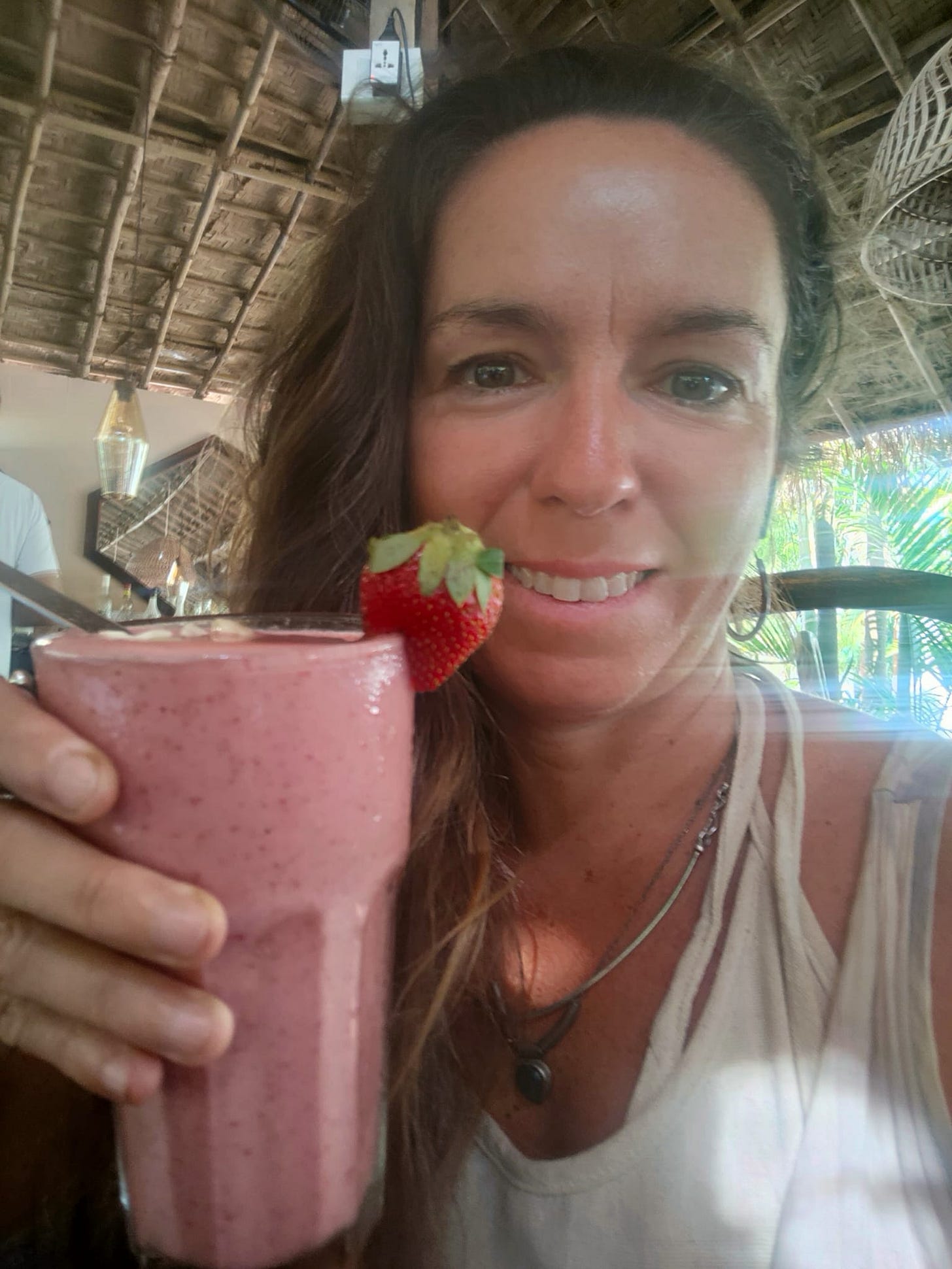It's World IVF Day. From The Birth of Louise Brown 47 Years Ago - The Fertility Crystal Ball Reveals What Lies 47 Years Ahead
How might solo women +40 experience the fertility industry in 2072?
Instagram: solofertility40s
This is story number 50 on SF40s so it’s also a little milestone celebration. I could never have imagined when I hit publish on the first story in September 2024 - deeply traumatised after my first IVF cycle in Spain - that SF40s would have readers in 20 countries around the world.
So here I am - still writing. And I have is plenty more to say!
If you’re new here, every story is free. Because if you’re a solo woman over 40 trying to decode the fertility industry, you don’t need more gatekeeping - you need information. SF40s has been created specifically for solo women +40. Thanks for being here.
If you find my writing valuable, you are welcome to Gift Me A Smoothie.
I was inclined to let this “World Day” pass by.
But maybe World IVF Day earns its spot. It marks the birth of Louise Brown - the world’s first IVF baby - 47 years ago. Which got me wondering: what might fertility treatment look like 47 years from now, for solo women +40?
If trends hold (and some wishful thinking is allowed), let’s gaze into the crystal ball to explore the shape of the fertility industry in 2072.
You’re a solo woman +40 starting fertility treatment. This is what you discover.
Treatment isn’t a postcode roulette.
Solo women +40 can access treatment more easily, part-funded by the government and irrespective of postcode. Local authorities funnel women to certified fertility centres where they are guided by impartial experts on their options, allowing them to make informed decisions. Women over 40 can choose specific doctors with extensive experience of the challenges of older biology.
Donor sperm is no longer a private monopoly.
Sperm donor banks are government-run (and price controlled) and readily available in most hospitals. Women can opt for this service if they wish, as opposed to large privately owned banks.
Embryo selection finally catches up with the science.
“Selection methods have vastly improved. We can confidently and non-invasively select a viable embryo for transfer. Then it's down to nature to work her magic.” Victoria Wigley, All About Embryology
In Vitro Maturation (IVM) is standard.
Eggs are matured outside the body using engineered ovarian support cells, that mature eggs in a dish by replicating the natural maturation process. Women need 3–5 hormone injections, not 12–14. Side effects: minimal. Emotional fallout: also minimal.
Oocyte aneuploidy correction is real - and regulated.
“Technological advancements correct oocyte aneuploidy, so women can create healthy embryos with their own DNA. Strict guidance safeguards ethical concerns.” Victoria, Founder, All About EmbryologyEgg freezing education actually reaches people.
Women +40 start families using eggs frozen in their 30s thanks to improved education programmes. This negates solo women from undertaking multiple cycles to reach a birth, which significantly reduces financial pressure.
Holistic fertility care isn’t a separate invoice.
Clinics in the “Gold Standard Network” offer integrated services such as acupuncture, nutrition and counselling, alongside medical care. These are not add-ons for the privileged few. This collaborative approach to care significantly reduces stress and better prepares women for treatment.Preconception support is non-negotiable.
“IVF can help two gametes (egg and sperm) meet but it has little impact on their quality and health. Therefore fertility journeys start with a deep dive into nutrition, lifestyle, and personalised investigations, at least three months before an IVF cycle begins (to provide enough time for optimisation). This essential groundwork improves outcomes plus the health of the babies born from IVF treatments.” Milena, Founder, Root & Leaf Nutrition
The 'IVF or bust' model is gone.
Women over 40 are offered a roadmap, not a sales funnel. This means clear decision trees, second opinions built in, and someone finally asking, “Is IVF actually right for you?” and “How can we best support you across several cycles?”Clinics are designed around women, not equipment.
Gone are the days of stripping behind a curtain, a little sheet to cover yourself. Clinics offer private changing rooms, proper gowns that close, and staff trained to treat patients like humans - not numbers on a list. Every woman is assigned a named care lead to ensure continuity, basic dignity throughout and emotional support (especially for solo women).
A 2020 study published in Human Reproduction found that around 19% of women who underwent unsuccessful fertility treatment met the clinical criteria for post-traumatic stress disorder (PTSD). An additional 23% experienced subclinical PTSD symptoms.
This study, based on a cohort in the Netherlands, is one of the most cited pieces of research highlighting the psychological toll of IVF, even in high-income healthcare settings. While exact figures vary, the consensus is clear: IVF can be traumatic, particularly for those undergoing repeated or failed cycles without adequate support.
By 2072, clinics have figured out that safeguarding women’s health - in every sense - is not only good for women, but also good for business. Smart women know who’s truly committed to patient care (as opposed to those merely offering slick marketing at fertility shows) and these clinics are the most profitable.
Solo women aren’t treated as a niche outlier or a cautionary tale. “Just use donor eggs, you’re old” isn’t a diagnosis. Women are part of a well-designed system that serves them effectively, without blaming their age or their ovaries.
IVF has come a long way since Louise Brown was born 47 years ago. But in many ways, not much has changed. We’re still retrieving eggs, mixing with sperm, and hoping for the best.
Success rates remain stubbornly low, especially for women over 40. The process is still invasive, expensive, and emotionally gruelling. Clinics vary widely in quality, and many decisions are still driven more by marketing than science.
But change is coming.
AI is already improving embryo selection, diagnostics, and clinic workflows, helping embryologists rank embryos more accurately, flag issues earlier, and personalise treatment based on real-world data.
If the next 47 years, there’s reason for cautious optimism that the look and feel of fertility treatment could be very different to today’s landscape - and a more fluid, cost effective experience for solo women +40.
FREE: Resources page on Solo Fertility 40s with my favourite webinars, articles, forums and podcasts.
FREE: 10 Important Questions for Your Fertility Consultation (download)
SEND A SMOOTHIE: Each story takes me around 4 hours to write, edit, test and send. I do this alongside my day job. I’m powered by daily berry smoothies! If you find my stories useful, you are welcome to show your appreciation by gifting one.




